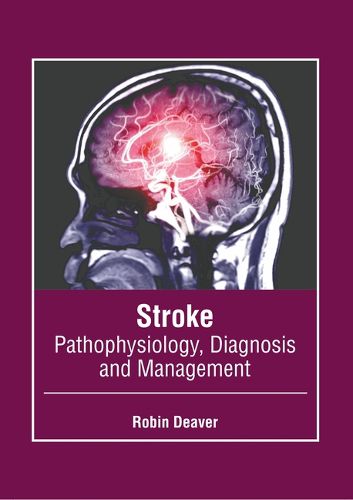Readings Newsletter
Become a Readings Member to make your shopping experience even easier.
Sign in or sign up for free!
You’re not far away from qualifying for FREE standard shipping within Australia
You’ve qualified for FREE standard shipping within Australia
The cart is loading…






A stroke refers to a medical condition in which there is insufficient blood flow to the brain that leads to cell death. There are two types of stroke, namely, hemorrhagic and ischemic. Hemorrhagic stroke is caused by bleeding, whereas ischemic stroke is caused by a lack of blood flow. High blood pressure is the most important risk factor of stroke. Modifiable and non-modifiable risk factors for stroke are influenced by genetics. The genetic risk is proportional to an individual's gender, age and race. A variety of genetic mechanisms can improve the risk of stroke. Doppler ultrasound, a neurological assessment like NIHSS, arteriography, and MRI scans or CT scans are used to diagnose strokes. If an ischemic stroke is identified within first three to four hours, it can be treated with a medication which can break down the clot. However, surgery is helpful in the case of some hemorrhagic strokes. This book is compiled in such a manner, that it will provide in-depth knowledge about the pathophysiology, diagnosis and management of strokes. It aims to shed light on some of the unexplored aspects of this medical condition. Those in search of information to further their knowledge will be greatly assisted by this book.
$9.00 standard shipping within Australia
FREE standard shipping within Australia for orders over $100.00
Express & International shipping calculated at checkout
A stroke refers to a medical condition in which there is insufficient blood flow to the brain that leads to cell death. There are two types of stroke, namely, hemorrhagic and ischemic. Hemorrhagic stroke is caused by bleeding, whereas ischemic stroke is caused by a lack of blood flow. High blood pressure is the most important risk factor of stroke. Modifiable and non-modifiable risk factors for stroke are influenced by genetics. The genetic risk is proportional to an individual's gender, age and race. A variety of genetic mechanisms can improve the risk of stroke. Doppler ultrasound, a neurological assessment like NIHSS, arteriography, and MRI scans or CT scans are used to diagnose strokes. If an ischemic stroke is identified within first three to four hours, it can be treated with a medication which can break down the clot. However, surgery is helpful in the case of some hemorrhagic strokes. This book is compiled in such a manner, that it will provide in-depth knowledge about the pathophysiology, diagnosis and management of strokes. It aims to shed light on some of the unexplored aspects of this medical condition. Those in search of information to further their knowledge will be greatly assisted by this book.